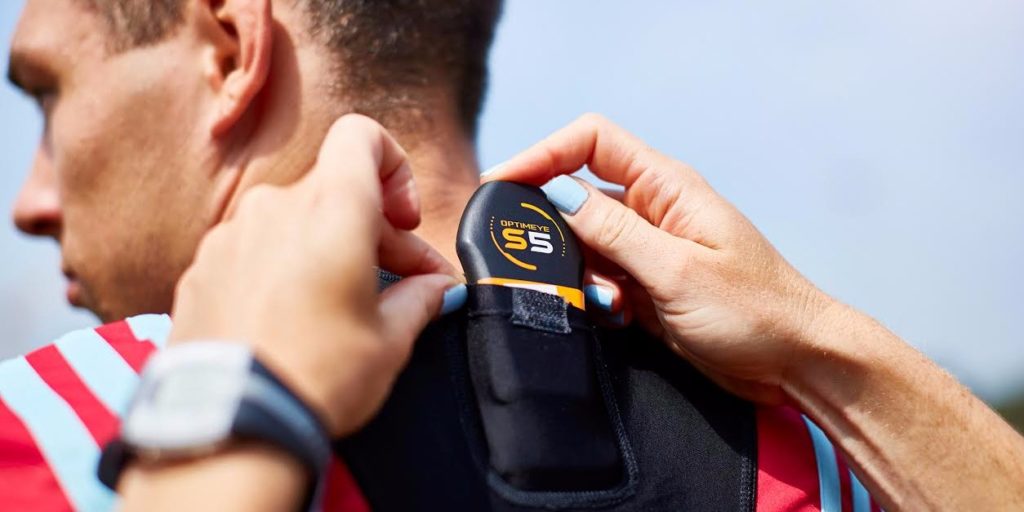Modern sport and technology go hand in hand. More and more often, athletes, players and coaches turn to data analysis to boost performance, officials use cutting edge technology to make instant decisions during events, and fans use new methods to consume and enjoy their favourite sports.
Rugby is no exception, in fact, technology is increasingly visible in the sport, both on-field and off. It’s now a quarter of a century since the International Rugby Board declared the sport professional, and in those 25 years, the game has embraced new technology to make things fairer and safer. More recently, the ubiquity of smartphones and tablets has meant that new ways for fans to interact with the sport have emerged. Let’s take a closer look at technology in rugby today.
Smart Refereeing
Any fan of rugby will appreciate the big impact a referee has on the game. We have enjoyed having a ref microphone for a number of years, which helps the casual fan to understand the on-field action, and to heighten the drama in general. But now we are seeing the introduction of a ‘ref cam’ – a lightweight HD camera mounted on the referee’s head or chest. As well as helping officials check decisions from the sidelines, the ref cam also gives broadcasters the chance to show the action from very close range. Of course, officials have already got Hawk-Eye technology to avoid controversial decisions. This allows them to view HD replays from numerous angles instantaneously, with the ability to zoom in and out as they require. This is also used to enforce new safety measures, as we will see later.
GPS
In days gone by, the only way to track each of the fifteen players on a side would be to follow them each with a dedicated camera. More recently, GPS tracking devices have been sewn into the kits of teams, which makes it easy to collect performance data on all players simultaneously. GPS is used to log the intensity of movement of each player, and this is especially useful given the different roles on a rugby team. A hooker’s and a winger’s roles are vastly different, so the data collected can help teams log how much time is spent sprinting, walking, jogging, rucking and scrimmaging, and tailor their training programs appropriately. GPS is also used in injury tracking and prevention, to log tackle impacts, amongst other things. This technology is widely used in rugby across Europe.
Spectators
Technology is affecting the way we consume and enjoy the sports we love, and rugby fans have a vast array of options. Live streaming on computers and mobile devices is widespread, allowing fans the chance to view wherever they are, with interactive options, such as the ability to choose between camera angles. For those who like to place bets on sport, the choices are myriad. There are many sportsbooks and online casinos that offer odds on rugby, often with changing odds during games, and many different types of bets besides the final result. In recent years we’ve seen the emergence of online payment methods like PayPal and cryptocurrencies such as Bitcoin, that make it easier than ever to place instant bets. These kinds of technological advances have helped popularise rugby beyond its traditional fanbase.
Backroom
We mentioned that GPS analysis can help with tactics and training programs. Backroom staff also have access to multiple camera angles and other data from the field to help customise every aspect of a player’s development. Data analysis has become an integral part of operating an elite sporting side, and a new generation of analysts and sports scientists are pushing in every direction to deliver optimum performance. Away from tactics and training regimen, analysis of player’s lifestyles, including their nutrition, sleeping pattern and relaxation activities are monitored and modified. Rugby players are famed for their work hard, play hard approach, but the modern game requires more restraint when it comes to post-match celebrating.
Player Safety
Concussions are a growing concern in the sport. Rugby has become more physical than ever, players are more powerful than ever, and as a result, serious head injury is a problem. Repeated concussions can lead to chronic traumatic encephalopathy, an incurable, degenerative brain condition. In the past, if a player took a big hit, they would only have to reassure the physio attending them that they were fine to continue. Now we have specialised gum shields which can track the force of an impact and relay it in real-time to a computer. This is crucial in reducing the amount of head, neck and brain injuries to players.
Rugby is an example of a sport where technology is being used for all the right reasons – fair play and good decisions on the pitch, entertainment value for fans, and most importantly, the wellbeing of the players of a physical, full-contact game.





